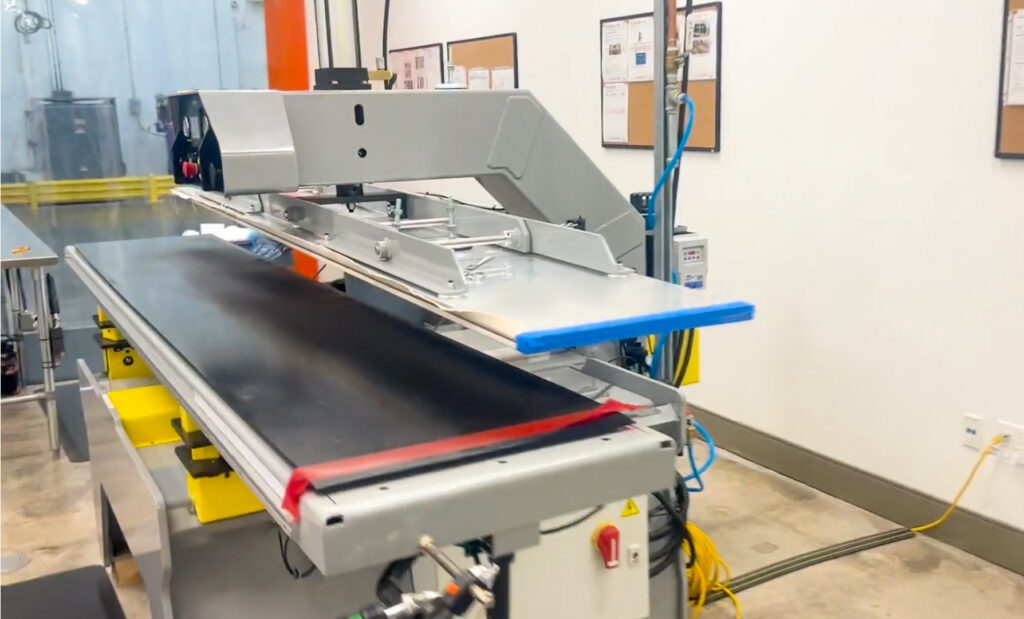Visiting a blank manufacturing facility and witnessing the process of creating a blank firsthand is undeniably an exhilarating experience for any custom rod builder. I was fortunate enough to have that chance and spent a whole week at the Rod Forge facility in Grand Prairie, TX, working on a fresh batch of blanks that I’ve been helping design.
They weren’t kidding when they said everything is bigger in Texas – the Rod Forge facility was truly impressive! I was welcomed by the entire staff who expressed their enthusiasm in having me join the design team for this project. The entire team was fully committed and dedicated their efforts to ensure the timely completion of these eagerly awaited blanks.

I spent a significant amount of time collaborating with the Rod Forge engineering team, conveying my vision for every blank in this new series. All the concepts were incorporated into the Rod Forge blank design software program, which played a crucial role in transforming the blank design concept to reality. Following some adjustments in the software design, a massive 50-foot automated CNC pattern-cutting machine begin making accurate and identical cuts on the material utilized for crafting the blanks.


I spent some time in a different production room next to the cutting machine area. This room contained the rolling table and cellophane wrapping machine. The Rod Forge blank production team performed their magic by attaching the flags to the mandrel. Afterwards, they let the machines produce a blank that was ready to be baked in the oven. Several hours later, they removed the cellophane and ran the blanks through a semi-automated sanding machine, resulting in a beautifully smooth finish.

Now comes the exciting part – blank testing. Perhaps you’ve come across some videos on social media where I swiftly wrap guides and tape a reel seat on. A lot of questions were asked why I decided to wrap the guides on that way. This was done to assess the low and high ratings of each blank from the Forge Composite blanks.
By now you’re probably wondering about these Forge Composite blanks. These new blanks, set to be released in early 2024, will be a great addition to the Rod Forge blank family – particularly for saltwater anglers and rod builders. The Forge Composite blank series are built on a mid modulus carbon fiber blank that incorporates S-Glass. Eventually, there will also be high modulus carbon fiber and S-Glass variations.
While testing with the Forge Composite 731, I checked with a 1oz sinker and made sure the tip had some life as I lifted it. Then I put on a 5oz and a 6oz and checked to see if the blank felt overloaded when I raised the tip. The sweet spot was 5oz so I was happy with that.


Once I knew the ratings for the blank, I checked the action, then the power, and made sure the blank had the characteristics I was looking for – which is a moderate action with a fish on that shuts off and doesn’t bend into the reel seat.
After the blank was approved, the ladies that do a lot of the rod wrapping for Composite Forge and Rod Forge constructed 4 finished rods on this blank. It was cool to see them wrapping the guides with carbon tape and finishing with UV light-curing Resin from Rod Teck. I took some videos of Gabby wrapping and applying finish, along with some of the bend test photos. You can view more photos and videos from my visit here.

My favorite part about my visit to the Rod Forge factory was the blank painting booth. The process is next level – computerized mixing, ventilated – it was very impressive! Currently, Rod Forge has 20 color options (More coming soon!) for builders to choose from, the cherry on top of a high-quality product produced from the world’s most technologically advanced blank manufacturing facility in the world.
I look forward to returning back to Composite Forge/Rod Forge headquarters very soon. In the meantime, stay tuned for these new blanks. We know you’re going to love them!
-Billy V.





